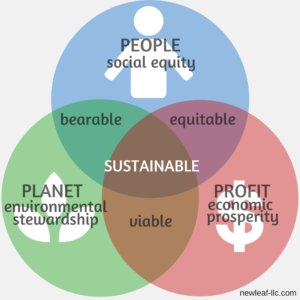The DES 225 class was requested to read a book chapter (or academic journal article) of our choice based on collaboration to share with the class (the goal is to collect methods and guidelines that support healthy/inspiring collaboration). The outcome of this class is to work on an exhibition project collectively, the one which is going to be presented in December 2018 at Shrem Museum of Art and Mondavi Center, both located in UC Davis.
For this assignment, I chose to read the book called Collaborate: The Art of We, written by Dan Sanker. The audiobook is available in Amazon and it takes about 6 hours of listening. Now, I’m going to share with you the most important thoughts and lessons I learnt from this book, and for that I have divided my post in 2 parts. In the first part, I’m going to explain the parts of the book in general and in the second part, I’m going to write the information I consider the most valuable followed by my comments.
PART 1
It is important to know that the phenomenon of collaboration is getting popular in organizations, however while it is not a new buzzword, it is gaining more mileage because of the changes we see around us. In this book, the author states that in the coming decades, the fittest will be the ones who know how to collaborate. Also, in today’s global economy, time is of essence, as is quality. The book is timely because in the light of the present economy, collaboration is not just a best practice, but also an essential practice for performance. Furthermore, this book is a concrete example of the power of collaboration, since forty people collaboratively contributed to the forward of this book, which is divided on ten chapters where each one details a piece of the puzzle that is collaboration. ¹
The book starts describing what collaboration is and what is not, why collaboration is doable and critical to success, why it is important, how collaboration can be put into practice despite obstacles and finally, the tactical requirements and tools to achieve collaborative success. Collaboration can be defined as one important key in the innovation world, also it is said that collaboration shapes our work and many examples of this practice are part of many successful companies part of the sets of sciences. Later, the author explains concepts about networking, coordination and cooperation and he shows how these concepts are part of collaboration, but not collaboration in and of themselves. Finally, the author includes concepts such as collaborative methodologies, resource sharing and knowledge of basic economies which is divided into coordination (to do not duplicate work), collaboration and effectiveness (preventing double efforts instead of competing).
The author concludes the first chapter by sharing his company CaseStack’s collaboration experience as a case study, however many others examples from big companies were given as a good examples of collaboration such as Apple, Facebook, Procter & Gamble, Clorox, and so on. This companies encourage they employees to collaborate instead of compete between them and at the same time this companies collaborate with external resources as well. In the second part of the book, the author tackle how a goal is achievable before investing so much time, money, and other resources on it.
… (still updating)
PART 2
Changes happen quickly and often
As designers we should be venturers since success in this new economy demands the kind and quality of innovation that results from collaboration which brings together in information, knowledge, skills and prospective to create something all together new. In fact, when people are sharing knowledge and working through a common goal, they often discover needs that where unknown and they need to fulfill now.
How to succeed in a global economy?
For people who have this question on mind, technology is an important keyword to answer this question because companies nowadays are working with local factories to manufacture their products and to expand their markets, saving a lot of money due to a collaboratively work. Furthermore, there is a powerful business philosophy called The Triple Bottom Line where a corporation that is sustainable by this definition enjoys profits while improving the lives of the people while being connected and protecting the environment.
 The 3 pillars of the triple bottom line are:
The 3 pillars of the triple bottom line are:
-People (create community, employers good heath care)
-Planet (business practices that help to protect the environment, care about packaging uses), and
-Profit (economic value created by the organization, economic impact) .
The relationship between these concepts and business success, and innovation in the future would be the only way to do business to embrace sustainability.
Is it always collaboration the key of success?
There are some situations where collaboration are not appropriate since successful collaboration take time from generating ideas to conceiving a solution. Collaboration is not always guaranteed, for example emergency situations has demonstrated that collaboration is not always best and might end in a failure consequence because the goal is not accomplished.
Collaborate does require an investment of time of resources and should be a relationship between the time invested in collaboration and the expected time used, not trying to rush the process because the reason of collaboration is to maximize the resources
The book also remains me that radical collaboration is the future and it is completely important to be conscious about that collaborators’ culture affects when working in groups. So, we should develop soft skills such as tolerance, diversity acceptance, empathy, self-control and so on, so that we will be prepared for a collaborative work.
… (still updating)
References:
(1) Jossey-Bass; 2012; 190 Pages; ISBN: 111811472. Learning and Performance Quarterly, 1(1), 2012